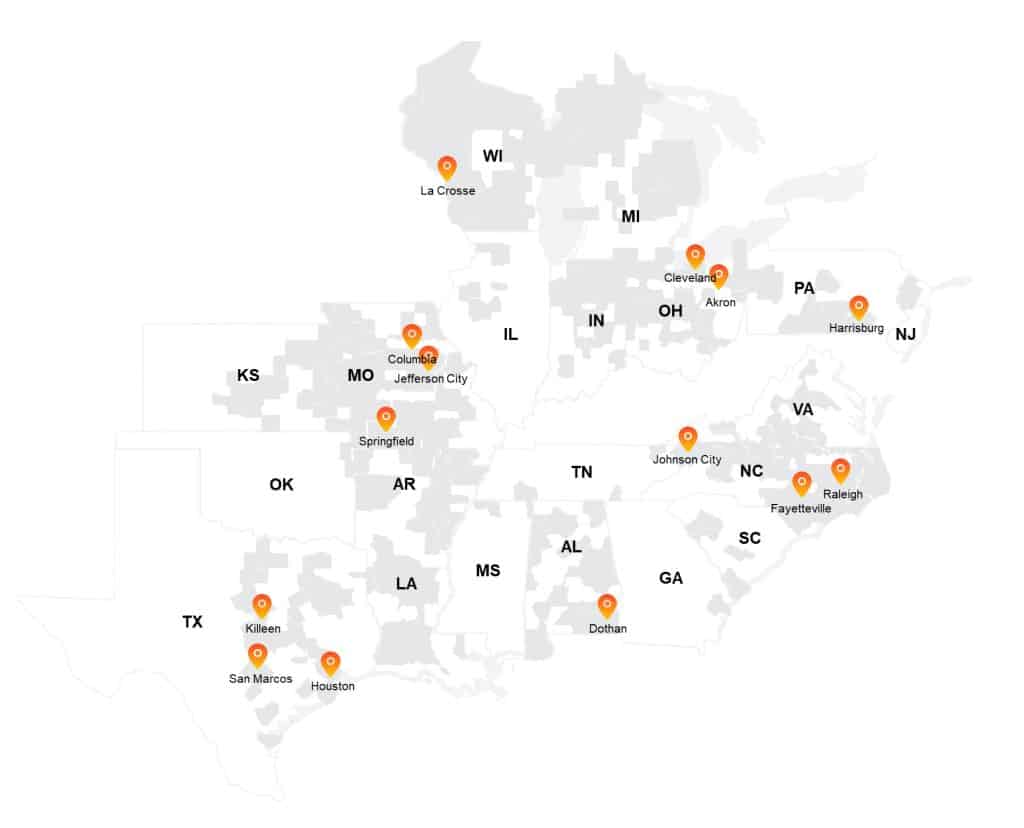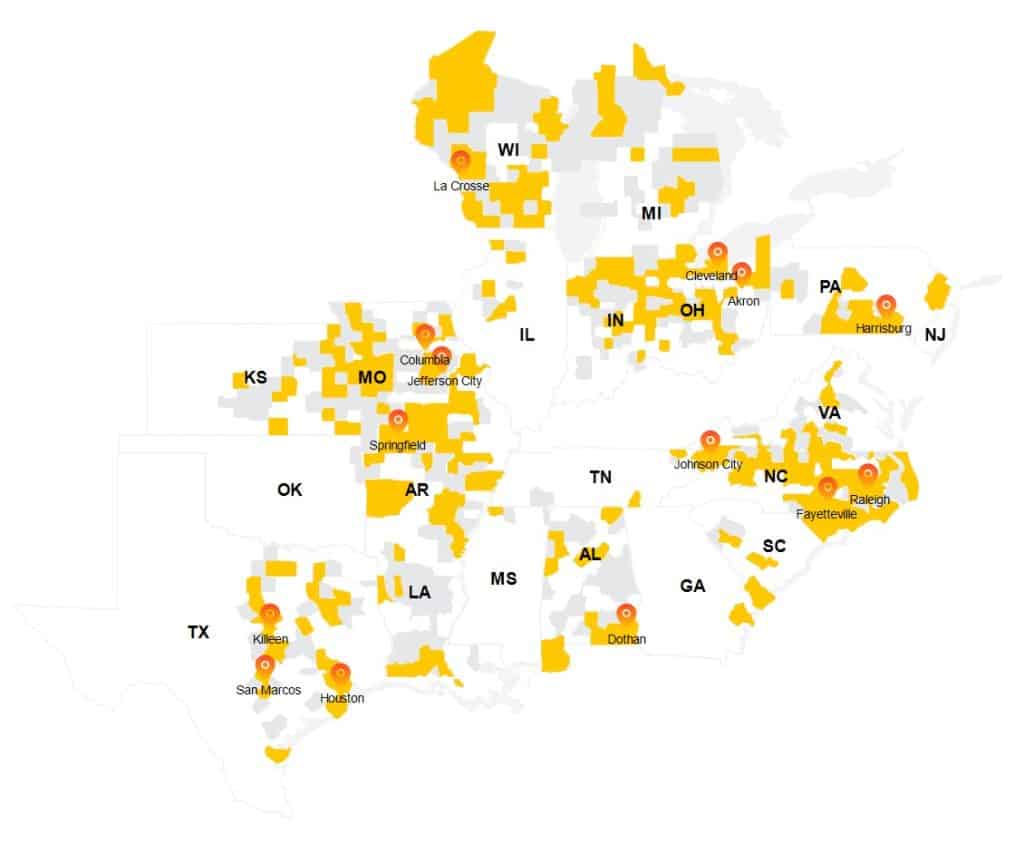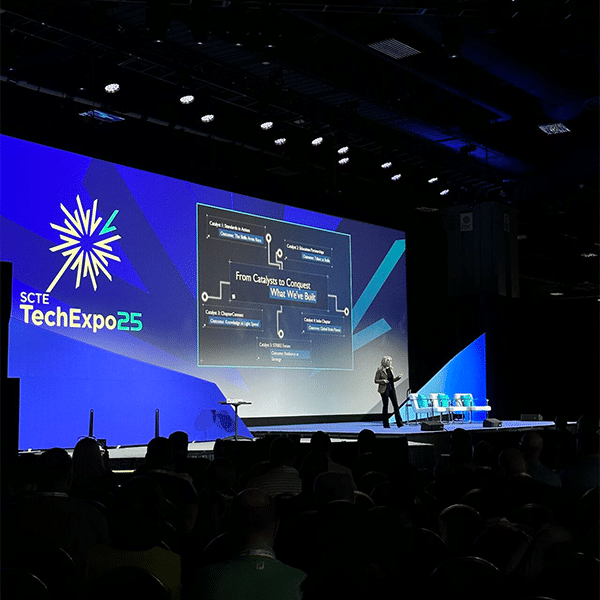Brightspeed’s origin story isn’t typical for the telecom industry – at least not for a company of its size. As the company’s new CEO Tom Maguire explained in an interview with Telecompetitor, it all started when Apollo Global Management approached Maguire’s colleague Bob Mudge with an investment premise that Apollo wanted to test.
That premise, Maguire said, was “If we invested in an under-invested wireline company, could we turn it into a growth company?”
At the same time, Lumen (known then as CenturyLink) was exploring strategic options for its consumer business. Having acquired Level 3, that company had largely shifted its focus to the enterprise and wholesale markets.
Apollo negotiated a deal to buy CenturyLink’s local service business in 20 states. That business appeared to be an excellent place to test Apollo’s investment premise.
Only 2% to 3% of the footprint that Apollo bought from CenturyLink had been upgraded to fiber when the ownership was transferred. Brightspeed’s goal is to get fiber to 50% of its footprint using the $2 billion in funding that Apollo made available to the company for deployments.
Before the deal closed, Apollo asked if Mudge, Maguire or a third colleague Chris Creager had any interest in helping to run the new company.
“We told him ‘You can either take all three of us or none of us,’” Maguire recalled.
The three men had previously worked together at Verizon and even retired at the same time.
As Apollo went through the process to close the deal with CenturyLink, Maguire and his colleagues released quite detailed state-by-state plans for how many lines Brightspeed planned to upgrade to fiber, even before the deal closed.

“To maximize the number of households, we focused on the cost per premises passed,” said Maguire.
Mudge was the first Brightspeed CEO but became executive chair of the Board of Directors in November. At the time Mudge’s move was announced, the company also announced that Maguire would become the new Brightspeed CEO when Mudge made his move.
One of Maguire’s top three goals as CEO is to improve the reputation that the company inherited.
Both of his other top three goals could help achieve that first goal. One is to focus on empowering people, most of whom were retained after the acquisition closed.
The third is to build fiber. Upgrading the speeds that the company’s broadband infrastructure can support would certainly be one way to improve the company’s reputation.
An Uncommon Network Architecture
As the company deploys fiber, it is using a rather uncommon network architecture that management expects to be more efficient, thereby maximizing the number of locations that can be upgraded.
One aspect of that architecture: “We eliminated fiber distribution hubs,” said Maguire.
In addition, the company began using plug-and-play fiber connections as an alternative to splicing. The company uses these connections not only inside, but also outside. This approach saves installation time and helps the company maintain deployment schedules, even when technicians who are adept at splicing are in short supply.

A considerable portion of Brightspeed’s network uses aerial cabling and as another method of saving costs, the company is continuing to use that infrastructure rather than burying the fiber.
When someone asks if buried fiber would be better, Maguire tells the person, “We could put stuff up in the air, get it knocked down, put it back up in the air, get it knocked down and put it back up in the air and now I’m approaching the cost to bury it.”
Threat or Opportunity?
Brightspeed’s rural builds have been bolstered, in part, by funding that the company has won in several state broadband programs, including in Michigan, North Carolina, South Carolina and others.
The company also has more applications pending, Maguire said.
Asked about the upcoming $42.5 billion BEAD rural broadband funding program, Maguire noted an interesting data point: The company may be one of those that have the highest number of existing locations eligible for BEAD.
That’s both a threat and an opportunity. Potentially the company could lose lines if other providers win funding to bring high-speed broadband to eligible Brightspeed locations. On the other hand, Maguire noted that the company could increase its fiber coverage to 75% of its footprint if it were to win all the funding for which it is likely to apply.
Not surprisingly, considering all that’s at stake, Brightspeed was one of the providers that spearheaded efforts to convince NTIA to relax BEAD letter of credit requirements – efforts that ultimately were successful.
Also unsurprisingly, Maguire doesn’t envision Brightspeed deploying service outside its home turf any time soon.
“We have a lot of work to do in our own territory,” he said.
Perhaps it’s too soon to determine the accuracy of Apollo’s theory that boosting fiber deployments can turn a traditional telco into a growth machine. But we should get the answer within the next few years as we watch what happens with Brightspeed.



